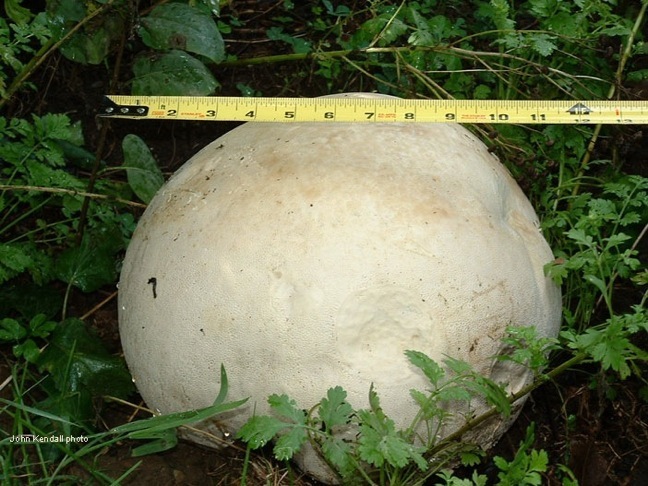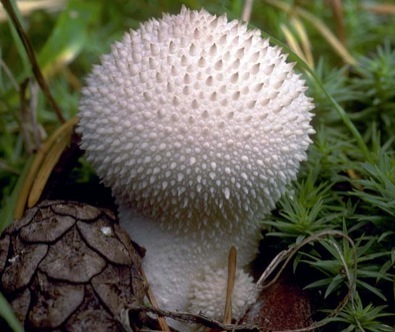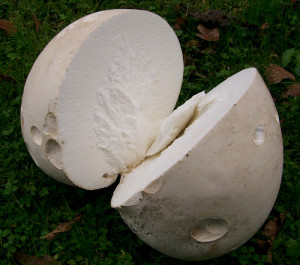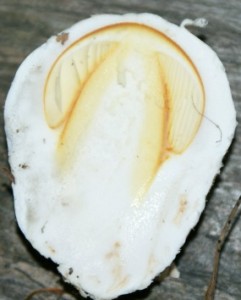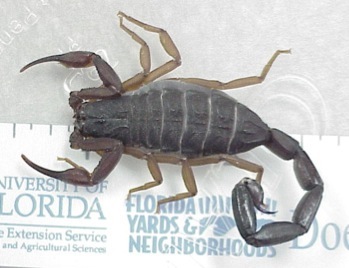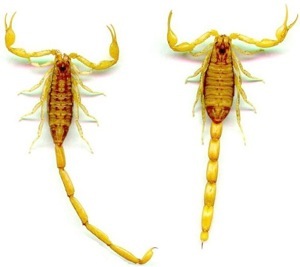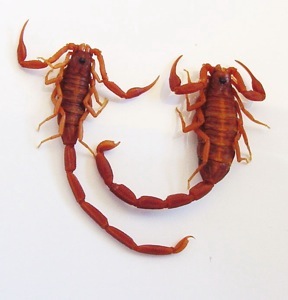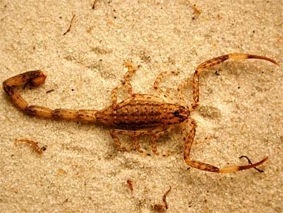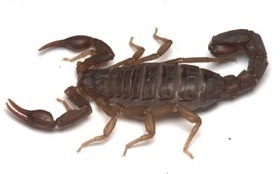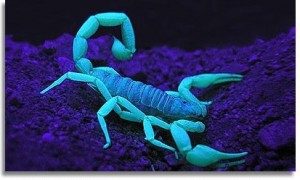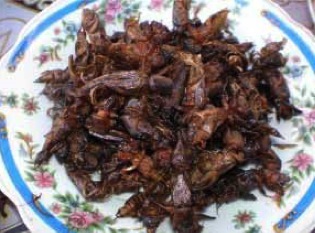
Sauteed Mole Crickets
Mole Crickets: Digging Your Lunch
Nearly everyone knows crickets are edible — cooked — but few ever mention the ugliest of them all, the mole cricket.
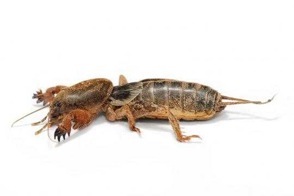
Ugly good eats
More crickets have a face only mothers could live. Designed like a shrew for digging, they live most of their lives in your lawn eating roots and killing grass. You can either look at that as a blight upon your personal putting green, or, where dinner awaits.
As many of my readers know I am not a fan of lawns. They are not green and are costly. Those who like decapitated grass spend hundreds — got that? — hundred of millions of dollars to get rid of mole crickets from their lawn. Can you say frying pan?
Locally there are three mole crickets, an inoffensive native and two imports. The imports — Scapteriscus boellii and Scateriscus vicinus — hopped ship from South America about a century ago and landed in Brunswick, Georgia, the epicenter of mole cricket-dom. From there it was a brave new world. They live to eat.
There is a bit of debate about the mole cricket. Some say it is just a vegetarian and death on just grass. Others, perhaps with some green rehabilitation in mind, say they eat some grubs and just ain’t all that bad. It’s a matter of perspective. If we didn’t have lawns — the second largest crop in America after corn — mole crickets wouldn’t mean much except perhaps pass the hot sauce.
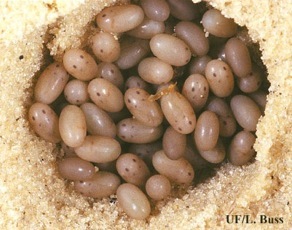
Mole cricket eggs
I’ve always found mole crickets just by rummage around infected areas of a lawn. You can stomp your feet to scare them out of their burrows and/or dig a little. They also like damp spoil and bright lights at night, look around patios and sidewalks. Mole crickets are also lousy jumpers and flyers so easy to catch that way as well. But wear light gloves. They bite. They don’t break the skin, it really doesn’t hurt, but it is a distraction. Put them in a deep bucket. Put the bucket in the frig to cool them off. Rinse, pat dry, now you are ready to cook. Here opinions vary again.
In the Philippines where they are called Kamaro and are a sought- after delicacy, cooking styles range greatly, though there are a couple of themes. Some like to stir-fry them without any oil or flavoring, preferring a taste they give off that way, slightly like liver. Once cooked you can eat them totally but most folks prefer to take off claws, legs and wings.
Next comes cooking them in oil with garlic. Then oil, garlic and onions. Not to be outdone there is also oil, garlic, onions and vinegar. Some like to flavor them with soy sauce and vinegar. However oil for frying and soy sauce for flavor seems to be the most common restaurant way of serving them. Vinegar on the side.
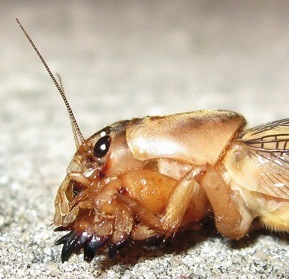
Mole crickets bite
To make the classic dish of Kamaro boil them in vinegar and garlic. Drain, remove legs, wings, claws et cetera, then saute the bodies in oil, chopped onion and tomatoes until they are chocolate brown. They go very well with cold beer. They’re crispy on the outside, moist in the middle. If you like a scratchy texture, leave the wings, legs and claws on.
A second common recipe takes slightly different approach. Numb them, remove the scratchy parts, then saute in garlic and onions with soy sauce, vinegar and hot pepper. Option; Add coconut milk to thicken the sauce.
In the Philippines mole crickets are seasonal and many people check with their favorite restaurant first to make sure they are available before deciding to eat there. Five ounces of mole crickets have 28% of the daily protein you need and 74% of the calories, according to a 2008 study.
To the right is evidence of mole crickets in the grass. Above that are young nymphs, and over that eggs. Notice the four dots? The same adult mole cricket will have those four dots on its back.

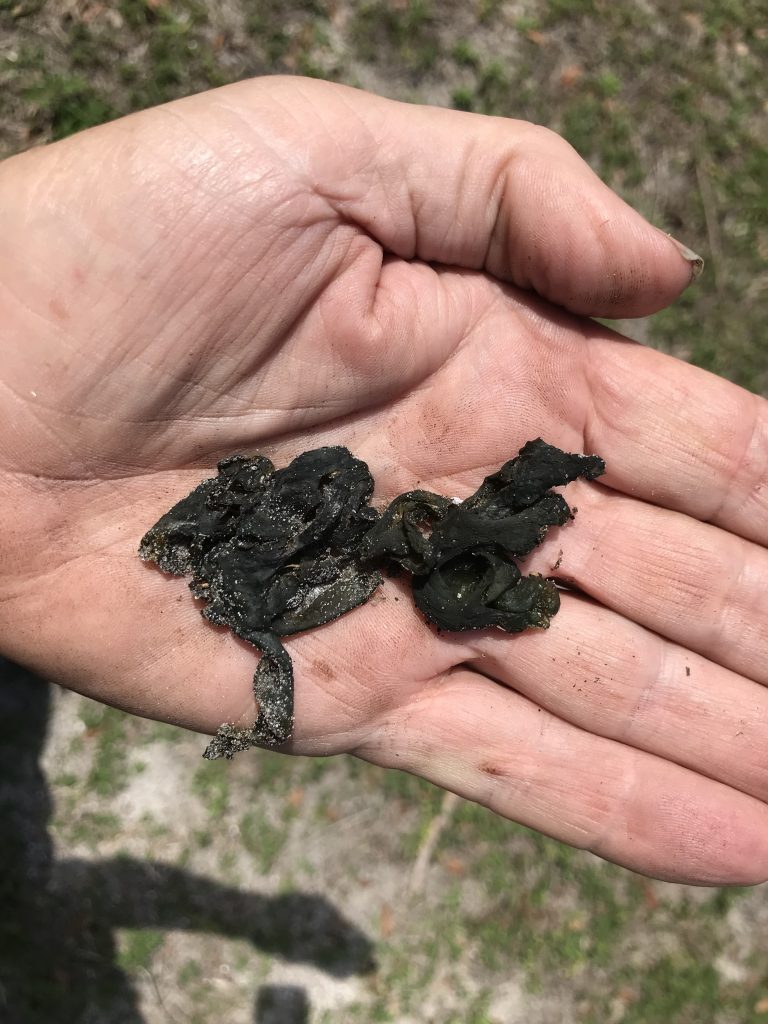
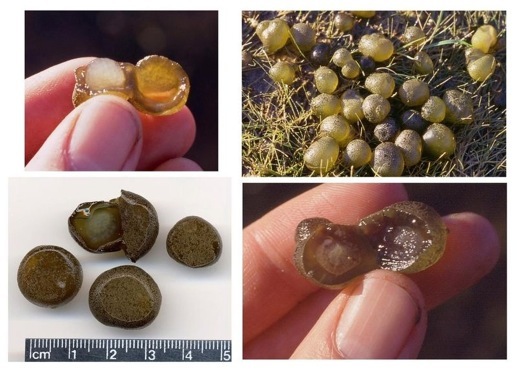 Nostoc marbles are made up of nostic filaments. The spheres are uniform size and usually green or olive green in color. Again void any blue-green ones. The filaments are long and held together by firm mucilage. They form colonies often marble size but also as big as a baseball. They can also be leaf- or hair-like. They are used like other algae or sea weed but not without some controversy.
Nostoc marbles are made up of nostic filaments. The spheres are uniform size and usually green or olive green in color. Again void any blue-green ones. The filaments are long and held together by firm mucilage. They form colonies often marble size but also as big as a baseball. They can also be leaf- or hair-like. They are used like other algae or sea weed but not without some controversy.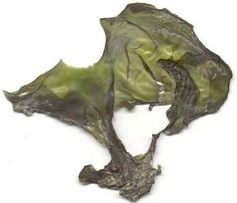 The genus name, Nostoc, was coined by “Paracelsus” which is a story unto itself. Auroleus Phillipus Theostratus Bombastus von Hohenheim, who later called himself “Paracelsus,” was born in Switzerland in 1493. He was the son of a well-known physician. Paracelsus became a physician, alchemist, professor and a heretic of much fame and controversy. He studied mineralogy, medicine, surgery, physics, astrology and chemistry, was a teacher by the time he was 16 and generally irritated the establishment with his intellect and ideas. Doctors often denounced him an impostor and his quick death in 1541 suggests someone got fed up with his arrogance and knocked him off. Controversial to say the least it was said of him he “cured the incurable, gave sight to the blind, cleansed the leper, and even raised the dead, and whose memory could turn aside the plague.” He also gave zinc its name and was the first to describe tuberculosis as a disease of the lungs. His motto was “alterius non sit qui suus esse potest” which means “let no man that can belong to himself be of another.”
The genus name, Nostoc, was coined by “Paracelsus” which is a story unto itself. Auroleus Phillipus Theostratus Bombastus von Hohenheim, who later called himself “Paracelsus,” was born in Switzerland in 1493. He was the son of a well-known physician. Paracelsus became a physician, alchemist, professor and a heretic of much fame and controversy. He studied mineralogy, medicine, surgery, physics, astrology and chemistry, was a teacher by the time he was 16 and generally irritated the establishment with his intellect and ideas. Doctors often denounced him an impostor and his quick death in 1541 suggests someone got fed up with his arrogance and knocked him off. Controversial to say the least it was said of him he “cured the incurable, gave sight to the blind, cleansed the leper, and even raised the dead, and whose memory could turn aside the plague.” He also gave zinc its name and was the first to describe tuberculosis as a disease of the lungs. His motto was “alterius non sit qui suus esse potest” which means “let no man that can belong to himself be of another.”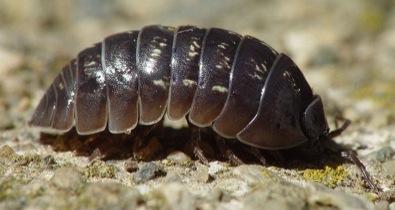
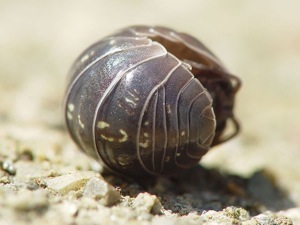 Let’s stick with Pillbugs for two good reasons. Those are the only ones that roll themselves into a ball, and they are the most edible of the lineup (some non-rolling sowbugs are foul-smelling and tasting.) Look for them in moist places such as basements, under rocks and logs (but also look out of other more harmful creatures.) They dry out easily so they are never far from moisture.
Let’s stick with Pillbugs for two good reasons. Those are the only ones that roll themselves into a ball, and they are the most edible of the lineup (some non-rolling sowbugs are foul-smelling and tasting.) Look for them in moist places such as basements, under rocks and logs (but also look out of other more harmful creatures.) They dry out easily so they are never far from moisture.
